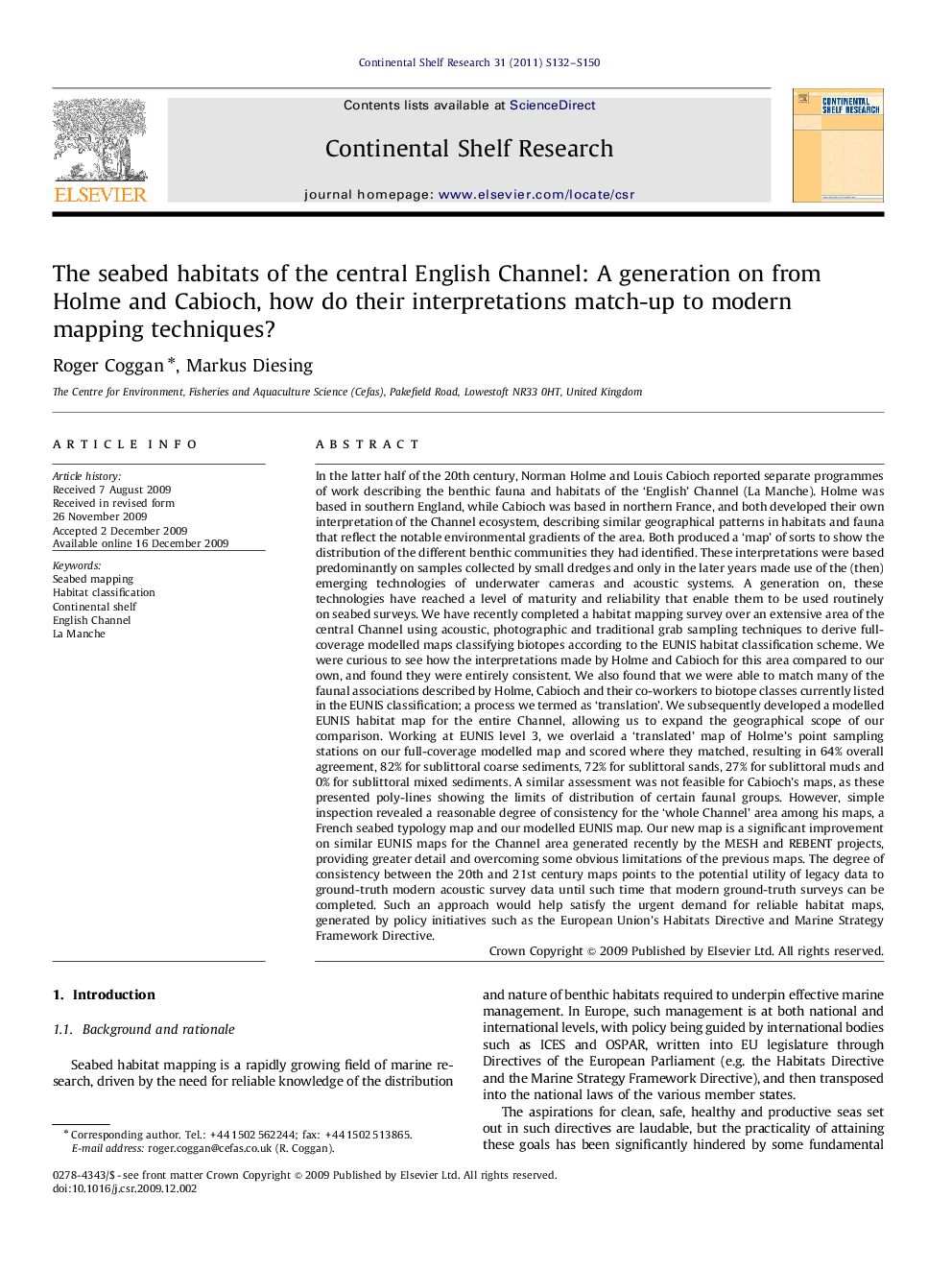| کد مقاله | کد نشریه | سال انتشار | مقاله انگلیسی | نسخه تمام متن |
|---|---|---|---|---|
| 4532549 | 1325128 | 2011 | 19 صفحه PDF | دانلود رایگان |

In the latter half of the 20th century, Norman Holme and Louis Cabioch reported separate programmes of work describing the benthic fauna and habitats of the ‘English’ Channel (La Manche). Holme was based in southern England, while Cabioch was based in northern France, and both developed their own interpretation of the Channel ecosystem, describing similar geographical patterns in habitats and fauna that reflect the notable environmental gradients of the area. Both produced a ‘map’ of sorts to show the distribution of the different benthic communities they had identified. These interpretations were based predominantly on samples collected by small dredges and only in the later years made use of the (then) emerging technologies of underwater cameras and acoustic systems. A generation on, these technologies have reached a level of maturity and reliability that enable them to be used routinely on seabed surveys. We have recently completed a habitat mapping survey over an extensive area of the central Channel using acoustic, photographic and traditional grab sampling techniques to derive full-coverage modelled maps classifying biotopes according to the EUNIS habitat classification scheme. We were curious to see how the interpretations made by Holme and Cabioch for this area compared to our own, and found they were entirely consistent. We also found that we were able to match many of the faunal associations described by Holme, Cabioch and their co-workers to biotope classes currently listed in the EUNIS classification; a process we termed as ‘translation’. We subsequently developed a modelled EUNIS habitat map for the entire Channel, allowing us to expand the geographical scope of our comparison. Working at EUNIS level 3, we overlaid a ‘translated’ map of Holme's point sampling stations on our full-coverage modelled map and scored where they matched, resulting in 64% overall agreement, 82% for sublittoral coarse sediments, 72% for sublittoral sands, 27% for sublittoral muds and 0% for sublittoral mixed sediments. A similar assessment was not feasible for Cabioch's maps, as these presented poly-lines showing the limits of distribution of certain faunal groups. However, simple inspection revealed a reasonable degree of consistency for the ‘whole Channel’ area among his maps, a French seabed typology map and our modelled EUNIS map. Our new map is a significant improvement on similar EUNIS maps for the Channel area generated recently by the MESH and REBENT projects, providing greater detail and overcoming some obvious limitations of the previous maps. The degree of consistency between the 20th and 21st century maps points to the potential utility of legacy data to ground-truth modern acoustic survey data until such time that modern ground-truth surveys can be completed. Such an approach would help satisfy the urgent demand for reliable habitat maps, generated by policy initiatives such as the European Union's Habitats Directive and Marine Strategy Framework Directive.
Journal: Continental Shelf Research - Volume 31, Issue 2, Supplement, 15 February 2011, Pages S132–S150